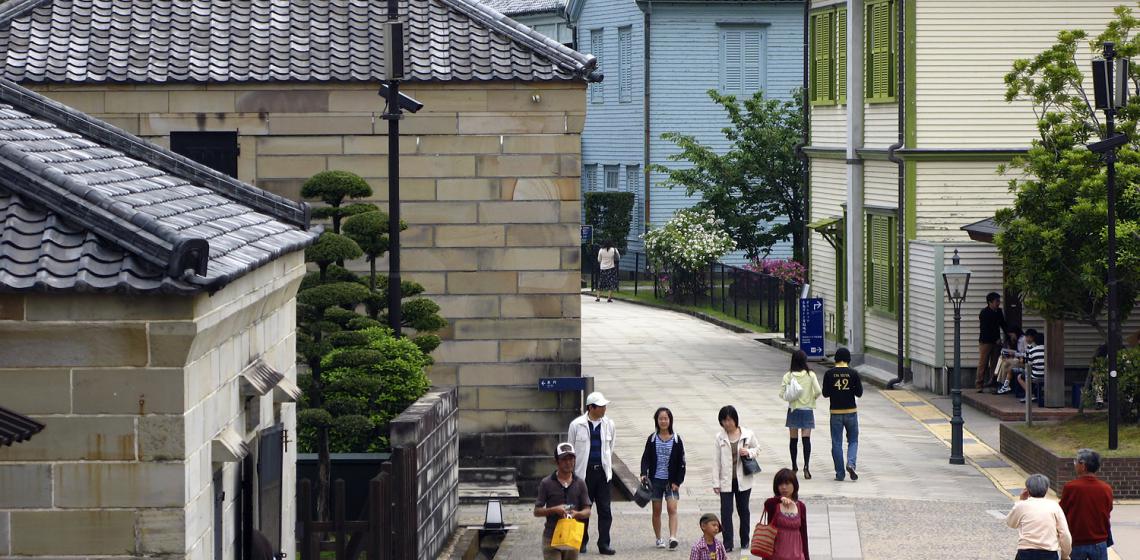
Dejima is an artificial island constructed by Nagasaki merchants until 1636 under Japan's feudal government (Tokugawa government) to continue the trade with the West while banning Christianity.
The area of Dejima, a fan-shaped island, is about fifteen thousand (15,000) square meters. In 1641, the Dutch moved in from Hirado to Dejima. Exchange between Nagasaki and the Dutch flourished after that, including trade, diplomatic relations, culture and study. For over two centuries, this was a small window between Japan and the rest of the world. When Japan was forced to step out of its isolation in 1859, Dejima was not anymore the monopoly of the Dutch.
Excavation of the former island started in 1969, with full-scale research since 1996. Currently, Dejima depicts life as it could have looked like in the early 19th century. Five buildings from the Edo period were restored in 2000 based on archaeological sources, with another five buildings completed by 2006. The latest restored buildings opened in 2016.
Although Dejima was an isolated island, it was crowded with many people including workers who carried various commodities during the trade season. Crossing the bridge to Dejima, you can see some two-story buildings in the west side, including the Chief Factor’s Residence. In front of this building, there are some warehouses to keep the trade goods. The Sea Gate stood at the west end of the island, where all of trade merchandise came through. On the east side there was a house for lower-class Dutch officials with a garden and a vegetable garden. Here too, cows and pigs barns and a villa for the chief factor were located.
The Dejima Open-Air Museum attracts about 400,000 visitors annually.
Text source: Miyuki Yamaguchi, curator of Dejima Restoration Office of Nagasaki City Hall.
